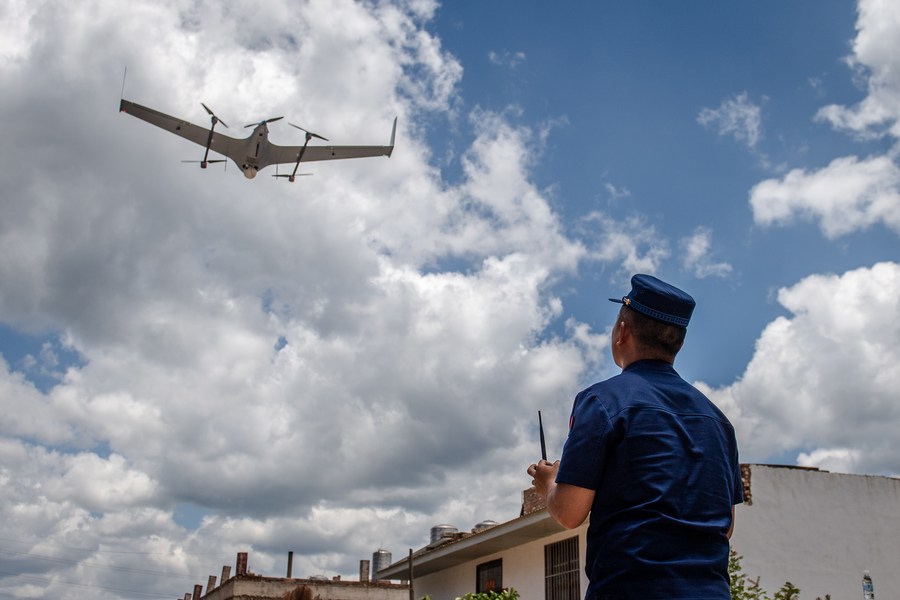 A staff member uses a drone to monitor the migrating elephants in southwest China's Yunnan Province, June. 1, 2021. (Xinhua/Hu Chao) GUANGZHOU, Sept. 2, 2022 -- A Chinese research team has used drones to film Tibetan antelopes unobtrusively at night in Hoh Xil in the Qinghai-Tibet Plateau hinterland.
The filming was jointly undertaken by researchers from the Northwest Institute of Plateau Biology under the Chinese Academy of Sciences and engineers from the Shenzhen-based drone maker DJI.
Using the drone's superzoom and wide-angle lens, infrared thermal imaging and laser distance measurement and positioning functions, the researchers filmed the nighttime behavior of Tibetan antelopes at high altitudes to further analyze their migration habits.
It was the first time the team used drones to track and film Tibetan antelopes for long time at night, said Lian Xinming, a research fellow from the institute.
The practice is of great value for the analysis of the nighttime habitat preference of Tibetan antelope, and also provides a new means for future nocturnal research on wild animals, Lian said.
Drones are able to track and film wild animals without the limitations of terrain and field of view, said Li Hongbo, an engineer at DJI. Because the drone can fly as high as 500 meters, non-contact filming reduces disturbance for the animals, Li added.
Drone tracking and filming have played a role in China's wild animal conservation in recent years, and have been used in the study of the migration of elephants in Yunnan and the migration of wild takins in the Qinling Mountains.
|
- Home
- News Tibet |Exclusive |China |World |Related News |Latest
- Documents White Papers |Others
- Photo Politics |Economy & Society |Culture & Religion |Human & Nature |Beautiful Tibet |Other Tibetan-Inhabited Area |Exchanges |Related
- Video News |Documentary |Micro-Video |Entertainment
- Art
- Tourism
- In Focus
- About Tibet






